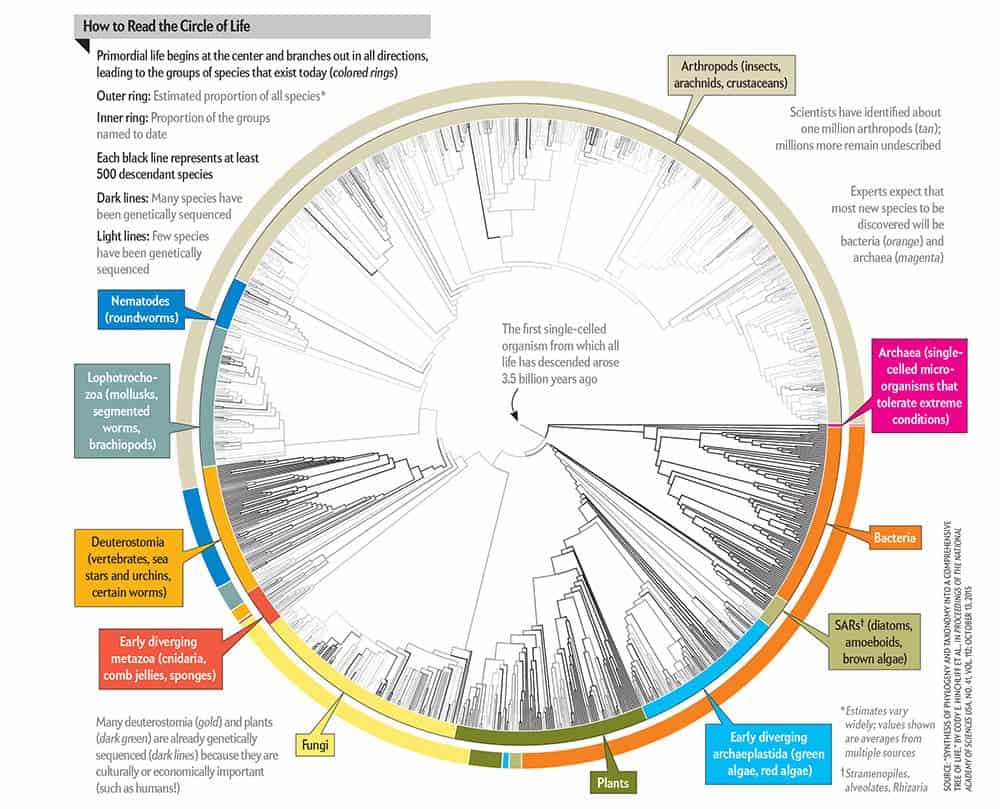For a large part of our history, western civilization has believed that all animals came from a big boat captained by a bearded man who heard voices. Since we’ve caught on that they’re actually the product of millions of years of evolution, biologists have tried to depict how species spawned from older ones. Each species is represented by adding a branch to family trees that represent parts of the animal, microbial and plant kingdoms.
The latest, most complete tree is the result of a three-year effort by researchers from over a dozen institutions from around the world. They combined tens of thousands of diagrams into one single tree, most easily read as a circle.
The lines inside the circle represent all 2.3 million species that have been named. Only about 5% of these have been genetically sequenced and as more are investigated the branches might get switched around.
This circle isn’t complete, but it’s the most complete collection of what humans have discovered. Experts estimate that up to 8.7 million species may inhabit the planet (about 15,000 new ones are discovered every year).
“We expect the circle to broaden,” says Karen Cranston, a computational evolutionary biologist at Duke University.
Greater detail on the tree would improve our understanding of evolution and help scientists invent drugs, make crops more productive and better control infectious diseases. You can help round up the circle too — propose updates to the database on OpenTreeOfLife.org.










